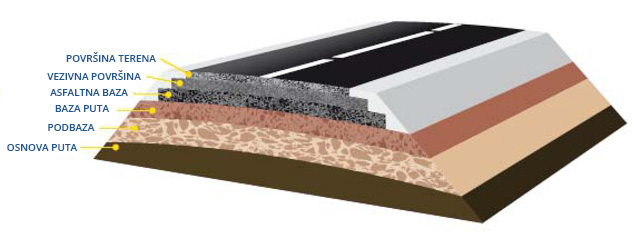TEXON REFINERY Serbia> Products> BITUMEN
TEXON OIL RAFINERY Serbia guarantees that we are always ready to meet the needs of our customers and deliver different types of bitumen and bituminous emulsions in accordance with the agreed deadlines, and above all:
Euro bitumen for roads 50/70
Euro bitumen for roads 70/100
Euro bitumen for roads 160/220
Bitumen PMB 45 / 80-65
Bitumen 85/40
Bitumen is a semi-solid hydrocarbon product, produced from heavy crude oil by removing lighter forms (such as liquefied petroleum gas, gasoline and diesel) during the processing process.
As such, it is known as refined bitumen. In North America, bitumen is more commonly known as "asphalt cement" or "asphalt", while elsewhere, "asphalt" is the term used to blend small stones, sand, fillers and bitumen, which is used as road material.
Asphalt mixtures contain about 5% bitumen. At room temperature bitumen is a stable, semi-solid substance.
Bitumen is mainly used in construction, primarily as an integral part of asphalt and for roof applications.
Bitumen emulsion
Bituminous emulsions are products in which they are small
The plates (dispersing phases) of bitumen or bitumen binder are sprayed in an aqueous medium (continuous phase). The bituminous particle can be positive (cationic), negative (anionic) or non-ionic (non-ionic) depending on the emulsifier. The binder can be bitumen or modified bitumen. Bitumen emulsions are mainly used as a binding element during asphalt. It is used to reduce the viscosity of bitumen so that it can be used at lower temperatures.

bitumen
.jpg)
Harmonized European standards exist for most types of asphalt binders. Applicable standards for bituminous binders in Europe are:
01. EN12591 - Travel bitumen
02. EN13924 - Hard road bitumen
03. EN14023 - Polymer modified bitumen
04. EN13808 - Cationic bituminous emulsions
05. EN13304 - Oxidized bitumen
Different types of bitumen are available, depending on the needs of the industry and conditioned by its physical properties, which is defined by the burden it will suffer during its exploitation age.
Bitumen is classified according to standardized test methods.
First of all it is sorted according to the depth to which standard needles will penetrate under certain test conditions. This "pen" Test Classification is used to indicate the hardness of bitumen. Lower penetrations point to hard bitumen. Bitumenes classified according to penetration are generally indicated in a range of penetration eg 50/70. Other tests are used to classify bitumen for specification purposes, such as softening, solubility, ignition, etc.
Bitumens are also used as raw materials for the production of a mixture (preparation) with improved characteristics, or for improving physical properties. In such products bitumen is often the main component, but they can contain in significant proportions and other materials.


